‘Mzungu, it is time’ said the conductor, picking his nose extravagantly and pointing out the window at the sandy crossroads our bus was approaching at high speed. In case I didn’t realise he was speaking to me, the only Mzungu (white person) on board, he leaned in very close and tapped my arm insistently. He didn’t need to lean far: mid-aisle, perched on top of some bags of rice and my backpack, he was tightly wedged between me and the bus door. Climbing over the conductor and dragging my backpack out from under him, I got off the bus and looked around for my next ride.
I was making my way down the coast of Kenya to Tanzania, with the following plan: show up in Dar es Salaam in about twelve days to meet Oyv. Travelling like this means patching rides together and I’d lost track of the matatus (minibusses), auto-rickshaws, bodabodas (motorbike taxis) and boats I’d been on so far.
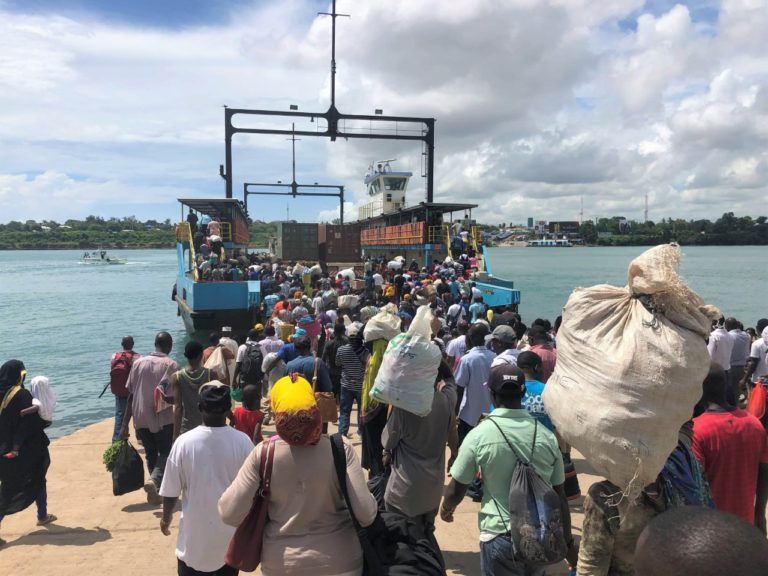
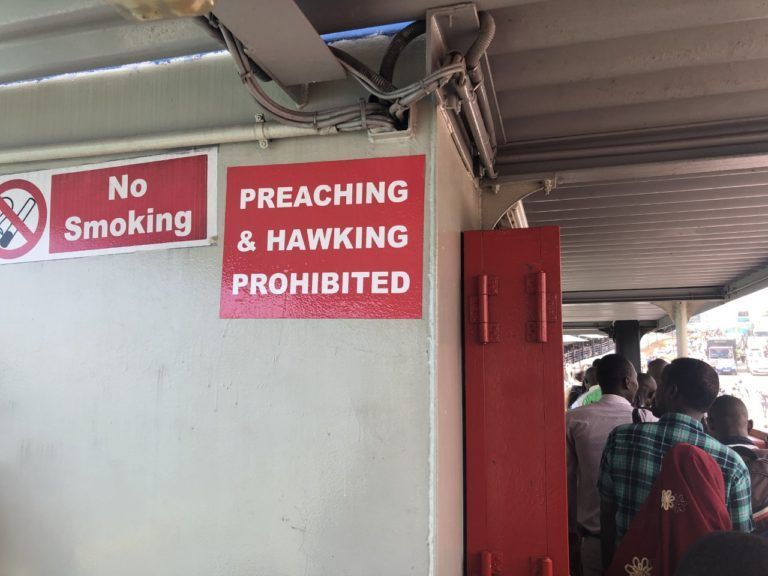
Some rides are memorable than others – usually for all the wrong reasons – but not in the case of this boat I took, skippered by the cutest boatman I’ve ever seen.
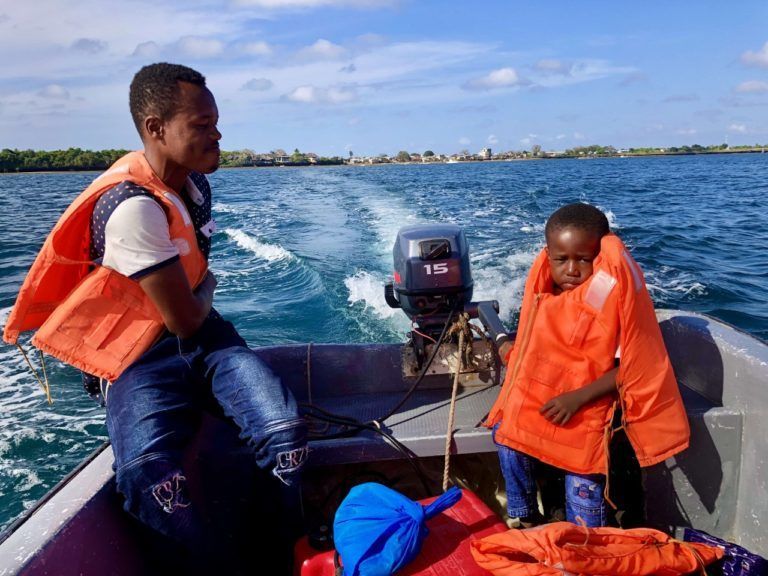
Travelling like this can also wear you out so I broke up the journey, checking into the eco-lodges and beachfront guesthouses this stretch of coastline abounds in, and spent my off-road time snorkelling and otherwise playing in the stunning waters of the Indian Ocean.
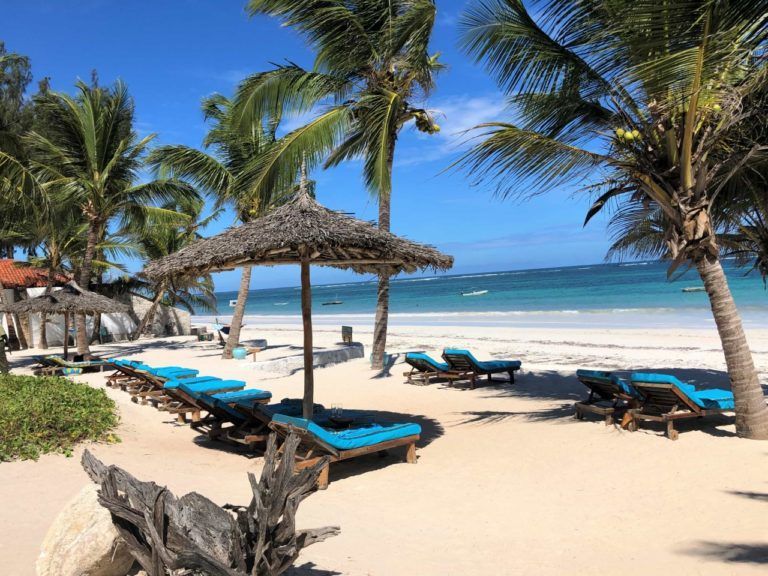
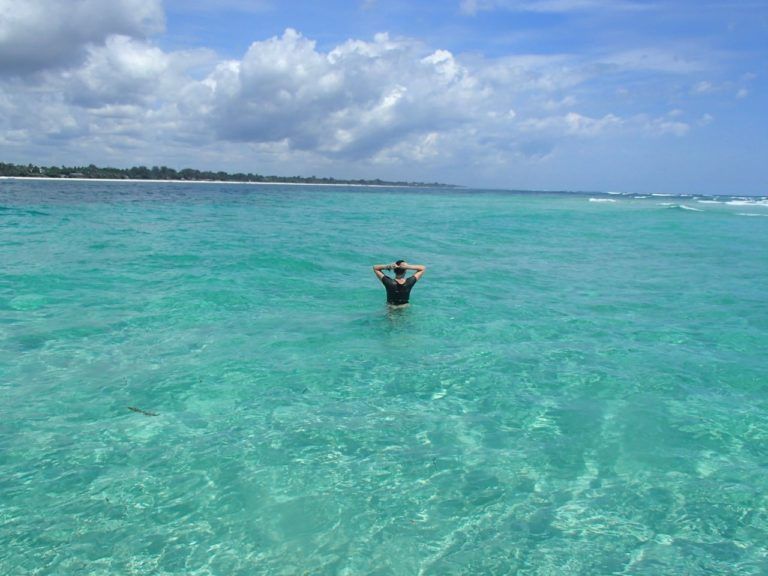
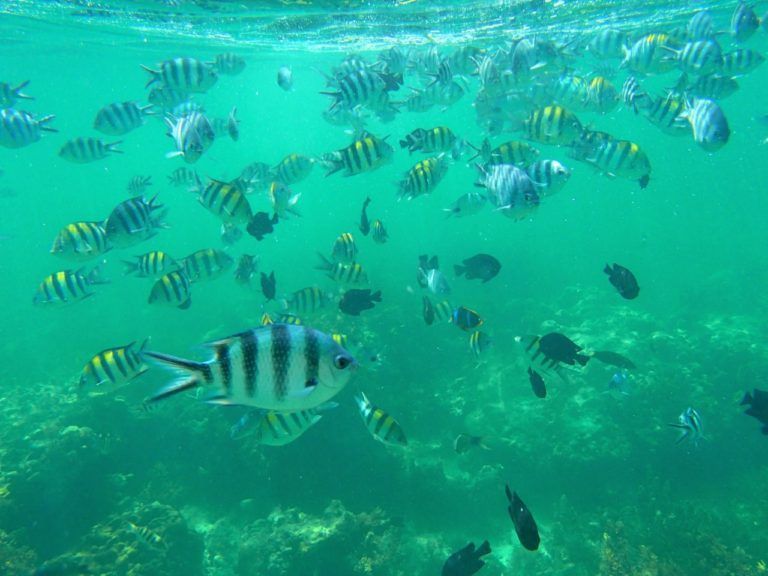
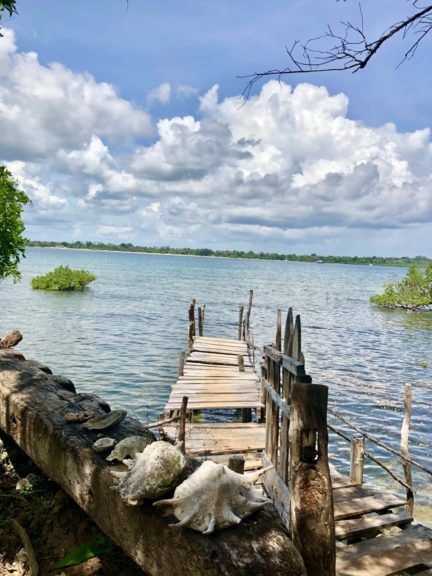
One way or another I arrived at the border between Kenya and Tanzania, where I lingered for a long time in a lengthy queue of one (it was just me), got a visa, changed currency with some guys lurking near the gate and then changed countries.
I didn’t know what to expect from my first stop in this next country, a once-significant port town called Tanga. The owner at my last guesthouse in Kenya told me that she went to Tanga whenever she wanted a taste of city life. But she lives on an uninhabited island with no electricity or running water, and some of the worst food I’ve ever eaten, so I tried not to get too excited. And sure enough, a couple of hours later as I zipped around Tanga on the back of a bodaboda, it quickly became apparent that there’s not much left to this former shipping capital. The dusty streets are quiet to the point of desertion and the colonial relics left behind by the Germans are silent ruins, peeling in the sun.
Even though I’d changed countries, some things still felt the same. From Somalia to Mozambique, traders from across the Indian Ocean have been visiting the East African coastline for 2000 years. Arabs came first, and by the 12th century they’d created a wealthy dynasty and the cosmopolitan culture we know today as Swahili – from the Arabic word sawahil, for coast. Word got around and by the 15th century the Portuguese were the first Europeans to arrive, capturing cities and establishing their own trading posts too.
As the Portuguese encountered resistance and retreated to Mozambique, European powers split Africa up and Tanzania became German property. But Germany lost its colonies during the First World War, and Tanzania fell to British administration. And who better to build railways and work the land, than other subjects from England’s own empire? Enter the Indians, mainly from Gujarat, who brought their own culture (and their delicious food) with them to add to the mix. Put simply, on the long road to independence – this place has changed hands.
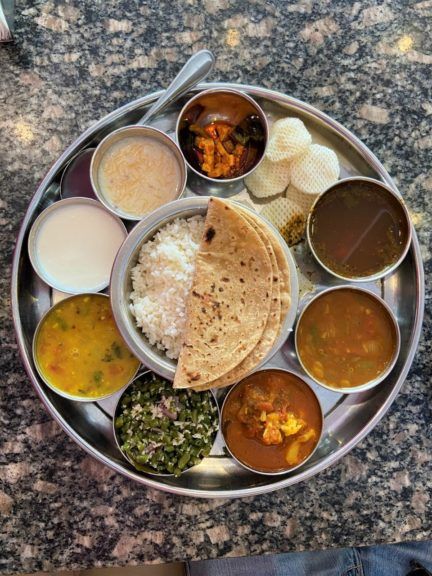
When the British finally forced an end to the slave trade in the 1870s, port cities like Tanga foundered. Travelling down Africa’s eastern coast, Arab forts, medieval mosques and palaces, and faded colonial ruins start to feel familiar, very fast.
Another reason it felt familiar to me is because it reminded me of our very first stop on our very first trip to Africa, eleven years ago: Bagamoyo. If memory serves me correctly (and to be honest it often doesn’t), Bagamoyo was a desperate, dirty, somewhat dodgy place. Oyv and I gained some of our very first impressions of travelling in Africa there. They weren’t good impressions, either (not that any of them put us off in the slightest). Sweating under a tattered mosquito net in an unbearably smelly room, one of the worst rooms we’ve ever had. Constant warnings not to walk alone and tempt locals to rob us on the beach. ‘Chipsi and eggi’ – soggy chips and greasy fried eggs – seemingly the only option at every noisy bar doubling as a depressing restaurant. The only good thing that happened to us in Bagamoyo back in 2008, is that we bought a mango and the vendor sprinkled peri-peri on it. It was delicious and my obsession to this day with the mango/chili combination took hold.
Basically, I didn’t like Bagamoyo. So, as I travelled along the coast of Tanzania again in 2019, I knew I had to go back and take another look. And as it turns out, either Bagamoyo has improved drastically over the interceding years, or my tolerance for desperate, dirty and somewhat dodgy places has.
Once just a little village that relied on fishing and coconuts, with the arrival of Arab traders Bagamoyo became the coast’s foremost slaving port, and one of the richest cities in East Africa. The name ‘Bagamoyo’ means ‘Lay down my heart’ which possibly comes from the town’s position as the point of no return for countless thousands of slaves captured and marched to the coast. Captives were held in the Arab fort here until their terrible voyage to the slave markets of Zanzibar. Since then, the fort went on to serve as a German military camp, a British prison, and then police headquarters. Today it’s the Government Antiquities Office, and it sells tickets to the woefully maintained sights in the old Stone Town – half-ruined buildings left from the slaving era and then German colonization.
But it’s not all dark history and bad news from Bagamoyo. French priests founded a Catholic mission here in 1868 and bought around 300 slaves their freedom, an instrumental push for the anti-slavery movement at the beginning of the end of the East African slave trade.
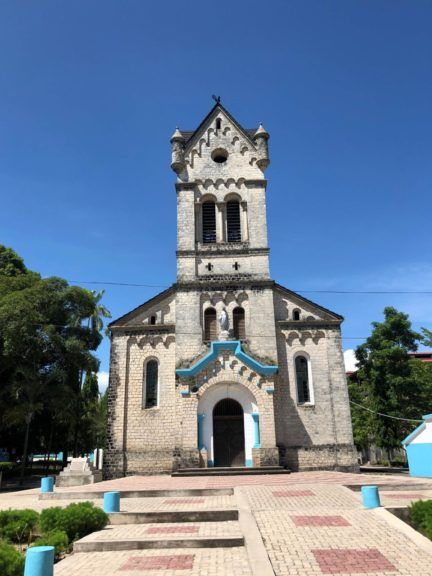
Bagamoyo was also the start or end point for a host of early explorers into the African interior: Henry Morton Stanley started his second famous march of discovery into the Congo from the town’s beach. Incidentally, being alive was not always a strict requirement for exploring Africa. When David Livingstone died in Zambia in 1873, two of his faithful servants carried his body on foot, all the way to the coast. It took them eleven months. Livingstone’s body spent the night at the Catholic mission in Bagamoyo before sailing to London and a burial at Westminster Abbey. There’s a sign at the entrance to the Anglican church in town reading ‘Through this door David Livingstone passed’. He certainly did, and he was even alive at the time – but the door itself was 1200 kilometers away, and only donated to Bagamoyo in 1974. However, points of historical interest are thin enough on the ground, so we can just let that one slide.
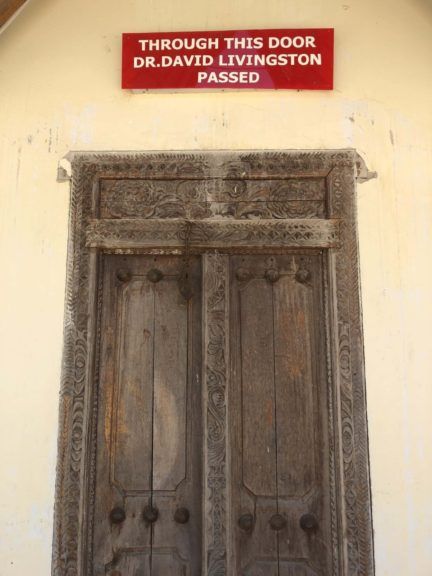
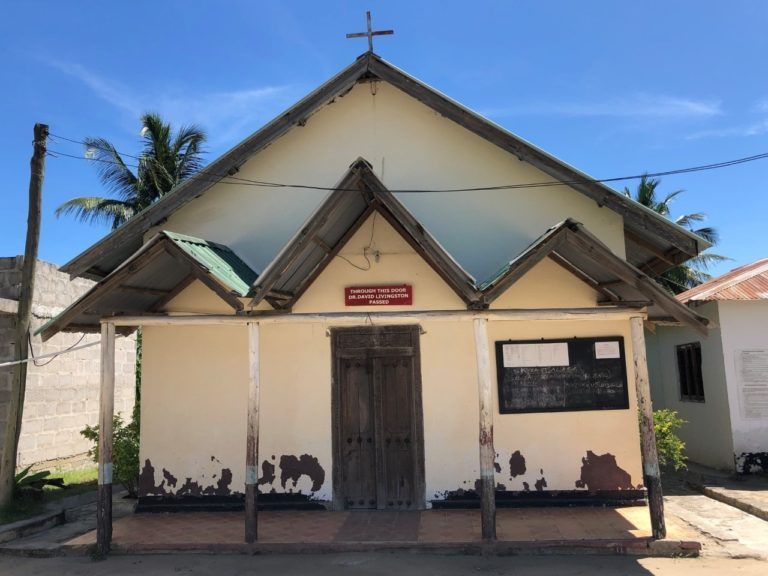
The slave trade ended, and later on, the Germans moved their colonial capital to Dar es Salaam. Bagamoyo quietly faded into peaceful obscurity and went back to relying on fishing and coconuts, like it did before.
As I explored the town again a lot of things felt familiar to me. None of the historical buildings in the old Stone Town looked any better – or for that matter, any the worse for wear. There are still a lot of unemployed men lingering under the trees at the back of the long beach, and fisherman mending nets and hammering the undersides of boats tipped on the sand at low tide. But that same long beach, the atmospheric ruins, and an arts scene have drawn development. There are some small, cool guesthouses and cafes.
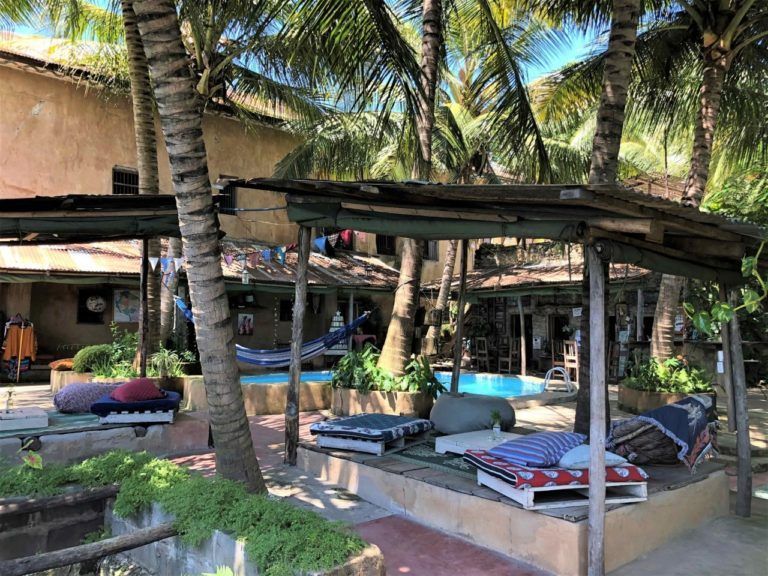
I didn’t even eat a single plate of chipsi and eggi. Far from it.
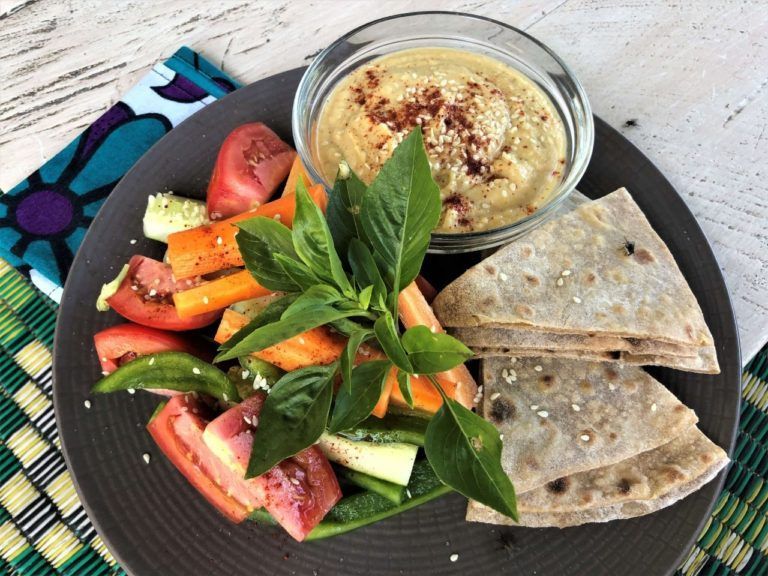
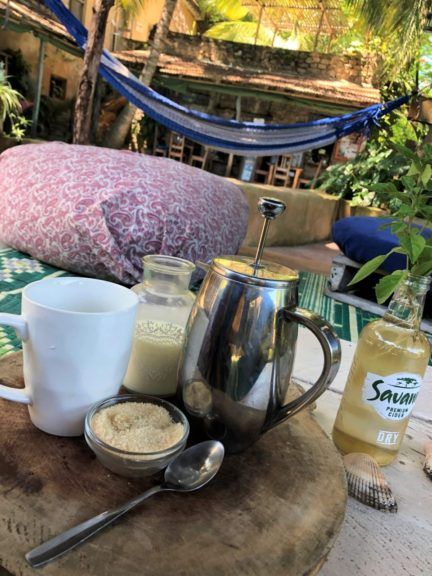
Life goes on as it did before and somehow Bagamoyo no longer seemed desperate, dirty and somewhat dodgy to me: maybe it has changed. Or then again, maybe nothing much has changed, except my view.
Read More
Check out the rest of my stories from the road, for more of my adventures (and misadventures) in Kenya and Tanzania.




This Post Has 4 Comments
Very good. Things look to have improved in Bagamoyo but you needn’t be so hard in chipsi-eggi; done well it can scratch an itch. And it’s better than matoke.
Then apparently I have never had chipsi and eggi done well. Matoke it is;)
Hi Sarah!
What is the name of the guest house you stayed at in Bagamoyo?
Thank you
Hi! I stayed at Barcelona Lodge, in the new town. The one I’ve got pictures of in this post, with the pretty garden/cafe is Firefly, in the old stone town.